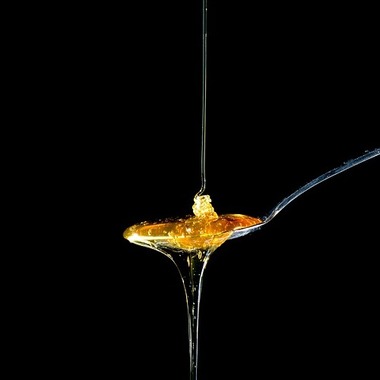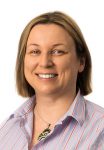Honey is a key component in many households, valued for its health benefits, antibacterial, and antioxidant properties. However, its premium price point and resource-intensive production has led to the rise of honey fraud – the intentional adulteration of honey. This poses a significant challenge to the global honey industry by impacting beekeepers’ livelihoods, who cannot compete with cheaper adulterated alternatives, and damaging consumer trust.[i]
Traditional testing methods, which are focused on the detection of only one or a few parameters cannot reliably detect counterfeit honey products due to fraudsters finding new methods to bypass the tests. Nuclear magnetic resonance (NMR) spectroscopy has proven effective at uncovering a wide range of adulteration methods thanks to the multitude of parameters tested.
The impact and implications of honey adulteration
Economically motivated adulteration (EMA) is the intentional act of adulterating food for financial gain.
Some examples of EMA include the deliberate mislabeling of honey origin or variety and the addition of foreign sugars to the honey. The difficulty in detecting honey manipulation and the potential for economic gain provide attractive fraud opportunities for dishonest business operators.[ii]
A significant amount of imported honey is suspected to be adulterated and falsely labelled and goes undetected in the European market.[iii] There has been a significant rise in cases of honey adulteration in the EU in recent years. In 2017, more than 14 percent of tested honey samples had been adulterated;[iv] and, in 2023, 46 percent of honey samples were suspected of being adulterated with syrups.[v] The increased rates of honey adulteration could be attributed to the challenge of monitoring and keeping pace with evolving fraudulent practices. Consequently, non-targeted and multi-marker methods, which are not specific to a particular type of adulterant, are being increasingly adopted.
Current testing methods
There are several testing methods that currently exist to detect sugar syrups in honey. These methods involve detecting foreign enzymes that convert starches into sugars or specific markers present in syrups. However, there is evidence that these methods can be bypassed by fraudsters to allow adulterated honey to continue being undetectable.
Stable carbon isotope ratio analysis (SCIRA) can detect corn and sugar cane derived syrups. However, it is unable to detect other adulterants, such as syrups derived from C3 plants (for example beet, rice or wheat sugar).[vi] This is a significant limitation as fraudsters are able to bypass testing by adulterating using C3 sugars.
Another testing method is liquid chromatography-high resolution mass spectrometry (LC-HRMS) which is used for marker detection. However, its targeted approach means it can only detect known syrups, which have been measured before.
NMR: an effective tool for honey analysis
NMR is a rapid screening method which can detect signs of adulteration and other potential manipulations of honey. It provides a molecular ‘fingerprint’ of a honey sample, giving definitive information about its molecular composition and the presence of adulterants, such as foreign sugars.
NMR has the capacity to determine the country of origin and botanical source of honey[vii] which is useful for identification and detection of adulteration, and to ensure quality control.[viii] Other benefits of NMR analysis include its speed, reproducibility and the fact that sample preparation is very simple.
Thanks to the multiparametric approach offered by NMR, and its potential to uncover new markers, masking adulteration and misleading the analysis is difficult and its high reproducibility allows precise sample matching against databases of authenticated samples.
Case study: Estonia introduces measures to protect the honey industry
In 2019, the Estonian government declared NMR as the official testing method of honey products in Estonia.
Estonian beekeepers that were ethically producing authentic honey were unable to compete with the price of adulterated honey, causing them to lose business. In support of beekeepers, the Estonian government introduced measures to protect the honey industry.
This support has had a positive impact on the Estonian beekeeping industry, with producers able to sell their products at a reasonable price, allowing them to maintain their beehives and livelihoods.
The government collaborated with local beekeepers, food testing laboratories, honey packagers and retailers to remove fake honeys from the local market, including both locally sourced and imported products. The adoption of NMR testing could help ensure standards are met and address the widespread issue of honey fraud.
A bright future for the honey industry
Food fraud continues to be a global issue. Fraudsters are constantly finding new methods to bypass existing testing methods, which affects food production worldwide. In the case of honey, despite some governments implementing measures to prevent false labelling and protect the livelihoods of beekeepers, the lack of standardized regulations across different geographical regions allows counterfeit honey to avoid detection. NMR proves to be a highly reliable alternative to traditional testing methods. By providing detailed insight into a sample’s molecular composition, NMR is playing a role in safeguarding the honey industry and ensuring its sustainability.
References
[i] European Commission. “Official Controls: Food Fraud – Honey, Questions and Answers.” 2021. https://food.ec.europa.eu/document/download/7186ec16-8f9d-4459-b155-f424ee6c7e3e_en?filename=official-controls_food-fraud_2021-2_honey_qandas_en_0.pdf.
[ii] European Commission. “Official Controls: Food Fraud – Honey, Questions and Answers.” 2021. https://food.ec.europa.eu/document/download/7186ec16-8f9d-4459-b155-f424ee6c7e3e_en?filename=official-controls_food-fraud_2021-2_honey_qandas_en_0.pdf.
[iii] European Commission. “Honey: 2021-2022.” https://food.ec.europa.eu/safety/eu-agri-food-fraud-network/eu-coordinated-actions/honey-2021-2022_en.
[iv] European Commission. “Honey: 2015-2017.” https://food.ec.europa.eu/safety/eu-agri-food-fraud-network/eu-coordinated-actions/honey-2015-17_en.
[v] EU Coordinated Action. “From the Hives” (Honey 2021-2022). Food Safety. March 22, 2023. Accessed November 22, 2023. https://food.ec.europa.eu/safety/eu-agri-food-fraud-network/eu-coordinated-actions/honey-2021-2022_en.
[vi] Mai, Z.; Lai, B.; Sun, M.; Shao, J.; Guo, L. Food Adulteration and Traceability Tests Using Stable Carbon Isotope Technologies. Tropical Journal of Pharmaceutical Research 2019, 18 (8), 1771–1784.
[viii] Schepartz, A. I., & Subers, M. H. “Honey Composition and Properties.” Journal of Food Science and Technology (2019). https://www.tandfonline.com/doi/full/10.1080/87559129.2019.1636063#d1e891.












